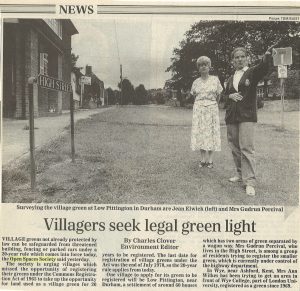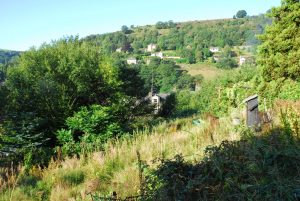Support us from £3/month
We deal with almost 1000 cases a year assisting communities, groups and individuals in protecting their local spaces and paths in all parts of England and Wales. Can you help us by joining as a member?
It is twenty-five years since the gates reopened to allow people to register land as a village green where that land had failed to be registered under the Commons Registration Act 1965. On 1 August 1990, a quarter of a century ago, the society led the way in advising people what they could do, with stories in the national and local press.
The Commons Registration Act 1965 required all applications for the registration of commons and village greens to be submitted by 2 January 1970, with a further six months allowed for local-authority registrations without applications. On 1 August 1970 the registers were closed (although applications could be made for land which subsequently became a common or green). Section 10 of the act said that the registration of any land as common or green was ‘conclusive evidence of the matters registered’. So once the disputes had been settled, everything on the register was in law a common or green, and everything not on the register was not. With a ludicrously short period of only three years for applications, many mistakes were made and undoubtedly many commons and greens were wrongly omitted.
Definitions
One of the definitions of a village green is, put simply, land where local people have enjoyed informal recreation, without being stopped or given permission, for a period of 20 years.
So provided people had continued to use land after it had failed to be registered, any land which was by non-registration declared not a green on 1 August 1970 could become a green again on 1 August 1990.
To mark the occasion, the society issued a press release ‘New chance to save village greens’ with a wide distribution. We quoted Low Pittington village green, north-west of Durham (pictured in The Daily Telegraph article above) as one which was threatened with encroachment by the highway department and which should have been registered in 1970. It was registered in 1994. However it was pipped by Steepfield at Hebden Bridge in Calderdale which was registered in 1991, the first (we believe) under the new regime.
Others followed: for example, in Kent (which was proactive) there were Clewards Meadow at Charing (1991), Duncan Down near Whitstable (1992) and Wittersham village green near Rye (1993), in Durham there was Satley village green near Consett (1993) as well as Low Pittington, and in Birmingham The Fields at Kings Norton (1994).
With support from the Countryside Commission we published the first edition of Getting Greens Registered in 1995.
Changed
Of course things have changed significantly since then, with legislative amendment to the definition of village greens and numerous cases going all the way to the House of Lords and the Supreme Court, to dissect every aspect of that definition. Now with the Growth and Infrastructure Act 2013 the opportunities for registration in England are greatly diminished. But we still remember with pleasure that exciting day twenty-five years ago when suddenly all those greens which had been lost could be recovered.


